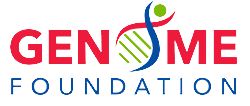Postnatal Genetic Testing
About 385,000 babies are born each day according to the UN.
The vast majority of these babies are born healthy, however, some are born with a serious medical condition.
Approximately 3% of babies are born with some form of birth defect (cleft palate, spina bifida, down syndrome, heart valve defects, etc.)
Newborn Screening (NBS)
When the child is first born, you will want to perform a newborn screen for genetic disorders.
Most newborn screens are performed 12 to 48 hours after the baby is born, usually before the child has left the hospital.
New-born screening is a set of laboratory tests performed on new-born babies to detect a set of known genetic diseases. Typically, this testing is performed on a blood sample obtained from a heel prick when the baby is two or three days old. In the United States, new-born screening is mandatory for a defined set of genetic diseases, although the exact set differs from state to state. New-born screening tests focus on conditions for which early diagnosis is important in treating or preventing disease.
New-born genetic screening. Mandatory new-born screening programs are a classic public health success story. These programs save lives and prevent disability in thousands of infants every year by identifying certain conditions promptly after birth. Early detection of those conditions allows different kinds of treatments and interventions to be provided very early in a new-born’s life when it can really make a difference in health outcomes and even help to prevent severe, irreversible disability. The reason why some states include different tests in their screening programs is complicated. A decision has to be made about what test to include based on which ones will bring about the best health outcomes for new-borns. The decision-makers also have to consider the costs and feasibility of screening, diagnosis and treatment and weigh that against the potential health benefits of each test.
New-born screening – heel pricking for blood collection
Birth to All Ages Genetic Tests
A child born with a genetic disorder (monogenichas altered or mutated DNA sequence in one particular gene. The human body is programmed by approximately 20,000 genes. These genes provide instructions to build a human body and keep it operational throughout a human lifespan. Some abnormal genes are expressed at birth and others in later life, being referred as late age at onsetr diseases. Some mutations require confounding environmental factors for expression. It means that human being can be considered as normal. As age advances, the accumulation of genetic mutations and exposure to various environmental factors pre dispose to disease like dementia and Alzheimer’s.
Genetic Diseases can be broadly divided into Three groups based on age at onset.
Group 1: Birth to 1 year – Diseases with high heritability (inheritance) values i.e., 100% genetic involvement. Mostly includes ‘RARE DISEASES’.
Group 2: 1year to adulthood: Diseases like DMD start showing up from toddler age and fully penetrant by teen age.
Group 3: adulthood to old ageDiseases with grades of proportion of Genetics & Environment differing from diseases to diseases and person to person known as ‘COMMON DISEASES’ also known as LIFESTYLE DISEASES (ex. Diabetes, Hypertension, Cardio-vascular diseases, etc.)
Until now clinical practice is ‘symptomatic’, now it’s based on ‘knowing the cause’ of the disease. Genetic testing heralded in knowing the Gene / Mutation causing the disease. At Genome Foundation our approach is ‘Theranostics’ means combining both diagnosis and therapeutics and differ for RARE and COMMON DISEASES.
Genome Foundation’s Approach
Rare Genetic Diseases is to identify the causative mutation of a gene causing the disease by undertaking Microarray, targeted Sanger sequencing or whole exome sequencing. Sequencing of the parent samples will be undertaken to advise clinician for genetic counselling.
For Common Diseases, we adopt OMICs approaches including whole genome sequencing, metabolome, and microbiota towards Family Wellness in terms genes and risk evaluation.
List of Rare and Common Diseases treated by Genome Foundation
- Hay Fever – Hay fever is often an inherited trait (genetically determined). Most people with hay fever have a parent or sibling who also has allergies.
- Xanthomas Hypercholesterolemia – Xanthoma tendinosum (also tendon xanthoma or tendinous xanthoma) is clinically characterized by papules and nodules found in the tendons of the hands, feet, and heel. Also associated with familial hypercholesterolemia (FH). Xanthomas typically affect adults, although children with familial hypercholesterolemia may present with xanthomas.
- Tuberous Sclerosis – Tuberous sclerosis is a rare genetic multisystem disorder that is typically apparent shortly after birth. The disorder can cause a wide range of potential signs and symptoms and is associated with the formation of benign (non-cancerous) tumours in various organ systems of the body.
- Lamellar Ichthyosis – Lamellar ichthyosis (LI) is a rare genetic skin disorder that is present at birth. It is one of three genetic skin disorders called autosomal recessive congenital ichthyoses (ARCI). The other two are known as harlequin ichthyosis and congenital ichthyosis form erythroderma.
- Woolly Hair with Palmoplantar Keratosis – Woolly hair-palmoplantar keratoderma syndrome is a very rare, hereditary epidermal disorder characterized by hypotrichosis/woolly scalp hair, sparse body hair, eyelashes and eyebrows, leukonychia, and striate palmoplantar keratoderma (more severe on the soles than the palms), which progressively worsens with age. Pseudo ainhum of the fifth toes was also reported. Although woolly hair-palmoplantar keratoderma syndrome shares clinical similarities with both Naxos disease and Carvajal syndrome, cardiomyopathy is notably absent.
- Papillon-Lefevre Syndrome (PLS) – Papillon–Lefevre syndrome is a rare autosomal recessive disorder characterized by palmoplantar hyperkeratosis and aggressively progressing periodontitis leading to premature loss of deciduous and permanent dentition. The etiopathogenesis of the syndrome is relatively obscure, and immunologic, genetic, or possible bacterial aetiologies.
- Beta Thalassemia (BT) – Beta thalassemia is an inherited blood disorder in which the body doesn’t make as much beta globin as it should. Beta globin and alpha globin are building blocks of haemoglobin. Haemoglobin is the part of red blood cell (RBC) that carries oxygen throughout the body.
- Sickle Cell Anaemia – Sickle cells that block blood flow to organs deprive the affected organs of blood and oxygen. In sickle cell anaemia, blood is also chronically low in oxygen. This lack of oxygen-rich blood can damage nerves and organs, including kidneys, liver and spleen, and can be fatal.

